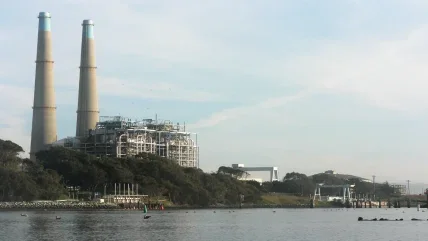
Phase III was declared commercial on 2 June. It began operation under a 15-year resource adequacy agreement with Pacific Gas and Electric Company (PG&E) beginning August 1.
Phase III is made up of 122 individual containers that together house more than 110 000 battery modules. It was completed on schedule and within budget in just 16 months, says Vistra, “despite a challenging supply chain environment and tremendous rainfall.”
The Moss Landing energy storage facility is located on the site of Vistra’s existing natural gas fueled Moss Landing power plant in Monterey County – a power generation site since 1950.
“Like our other energy storage projects, we’ve been able to locate this project at a site that has historically been used for electricity production, enabling the reuse of a site with existing industrial zoning and infrastructure and with the physical space for potential growth,” said Jim Burke, Vistra president and CEO. In addition, “revitalising existing sites ensures the local communities continue to benefit from ongoing operations.”
Vistra has become something of a market leader in US battery energy storage. In addition to its California assets, Vistra owns and operates a 260 MW battery in Texas, plus two solar facilities and one solar-plus-storage installation, also in Texas. In addition, Vistra says it has a robust pipeline of projects, including four solar installations and ten other storage and solar- plus-storage facilities, all in various stages of development in Illinois and Texas.
Vistra has also talked of a potential Phase 4 of energy storage at Moss Landing, eventually expanding the site’s capacity to 1500 MW.
Back in February 2022, the early detection safety system activated in the 100 MW Phase II building at Moss Landing, and the facility went offline. Vistra said it “contacted off-site emergency response out of an abundance of caution” but the building’s systems contained the event without the need for outside assistance.
The water-based suppression system of Phase II released water that contacted some batteries.
Water hoses leaked and some batteries shorted, creating smoke in the building, similar to what had been observed with the September 2021 incident at the 300 MW Phase I facility next door.
At the time of the Phase II event, Phase I was in the process of gradually being brought back on line following the September 2021 incident. It was decided to pause the Phase I restart pending assessment of the Phase II event and taking on board any “learnings” to be derived from the Phase II incident.
As of July 2022 Vistra said Phases I and II had been successfully restarted, with more than 98% of their 400 MW capacity, “now storing and releasing power to the California grid for the all- important summer season.”
The company said it began incrementally bringing the storage systems on-line throughout May and June after “implementing identified corrective actions, including related to connectors in the water-based heat suppression system.”
Vistra said it continued “to work with regulators and state and local officials” as it completed the restoration work.
Also located in Monterey County is Pacific Gas & Electric’s 182.5 MW/730 MWh Elkhorn lithium-ion battery installation. Sited at PG&E’s Moss Landing substation, this employs Tesla Megapack technology.
In September 2022 a fire occurred at Elkhorn (an all too frequent problem encountered with Li-ion batteries). The good news is the Elkhorn fire was isolated to a single battery pack.






